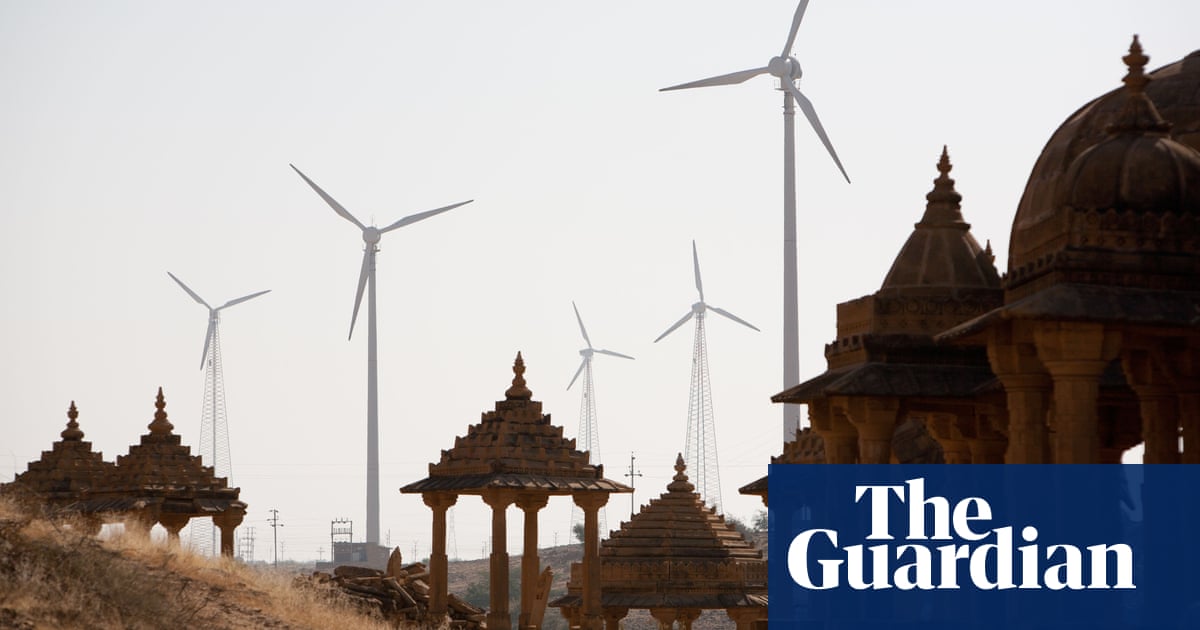The United States and India have made the greatest progress among the world’s top 20 economies in implementing climate policies since the 2016 Paris Agreement, a study commissioned by the Guardian has found.
The data underscores the importance of political leadership and international coordination, both of which are coming under intense pressure ahead of the inauguration of Donald Trump, who has threatened to pull the US out of the United Nations climate treaty.
Over the past nine years, the G20 group of the world’s biggest economies have together introduced policies that are likely to reduce CO2 discharges by 6.9 gigatons by 2030, the report by Climate Action Tracker shows.
Although this is not enough to keep global heating within the Paris target of 1.5C to 2C above preindustrial levels, the authors of the study say it is a substantial improvement on what was forecast in 2015, showing the Cop process – despite its many flaws – has had some effect in reducing the climate dangers facing the world.
Instead of emissions increasing by 20% between 2015 and 2030, as was predicted at the start of that period, the new policies – mostly to support renewable energy and phase out high-polluting power plants – adopted by most countries mean that CO2 emissions are now projected to return to 2015 levels by the end of this decade. This change in the policy scenario has contributed to avoided warming of about 0.9C since Paris.
“This is nothing to brush off. This is a major improvement in the group of countries covering more than 80% of global emissions,” said Leonardo Nascimento, an analyst at Climate Action Tracker, who compiled the statistics. “There is progress at the international level. I completely disagree that Cop is a useless process.”
There are, however, concerns that this already insufficient progress is stalling: Firstly because recent Cop agendas have been dominated by host nations that plan to expand fossil fuel production, including Egypt (Cop27), the United Arab Emirates (Cop28), Azerbaijan (the ongoing Cop29), and Brazil (next year’s Cop30). Prominent critics have said the process needs reform because it is “not fit for purpose.”
The other major threat comes from Trump, who will take power in January. Once again, by taking the world’s most powerful nation out of the Paris Agreement negotiations. Conservative supporters urge him to go further and entirely remove the US from the Cop process and roll back the renewable incentives introduced during the administration of Joe Biden.
This is a worry for two reasons. Biden’s Inflation Reduction Act, which supports solar, wind, electric vehicles and energy efficiency, is the main reason the US leads the G20 in projected CO2 reductions from 2015 to 2030. It accounts for two gigatons, far ahead of second-place India with 1.4Gt, and third-place European Union, and the UK with 1.1Gt. Depending on how far Trump goes with his rollback, these gains could be lost.
The other reason is the message this sends to the world. Different countries may be less inclined to accelerate the energy transition and provide funds for mitigation, adaptation and compensation for developing nations if the biggest economy steps back.
With global emissions still rising despite two years of record heat, frustrations with Cop are growing. Climate Action Tracker says current policies put the temperature rise on track for 2.7C by the end of the century, which would be calamitous.
after newsletter promotion
Analysts said it was essential for nations to step up rather than back.
Relative to their size, many smaller countries have made greater progress than the US in trimming emissions. And some large emerging economies are moving in the right direction. China – the world’s biggest emitter – has invested heavily in renewables and is forecast to hit some of its 2030 climate targets six years early and perhaps peak its CO2 output next year. “It is not just developed countries that are doing a lot, it is also developing nations with big populations and big inequality,” Nascimento said.
The analyst said that under the most optimistic projections, global emissions may finally peak next year – though this long-awaited moment has been wrongly predicted on multiple occasions in the past. The key, he said, is to maintain the political momentum behind the technological and business trends that have made wind and solar cheaper than coal, oil and gas.
“Fossil fuels are growing in a linear fashion, while renewables are growing exponentially. The displacement is happening faster than expected,” he said. “But we must not underestimate the impact of Trump. If the US, the world’s second-largest emitter, were to permanently walk away from its commitment to reach net zero emissions by 2050, our optimistic scenario for global temperature could increase by a few tenths of a degree, which would be very significant. It also depends on whether countries continue to pursue climate action in the light of cheap renewables and whether other leaders like EU, China, Brazil and others step up and remain united.”
“Despite improvements in global climate policy, the overall direction of travel remains bleak,” Nascimento said. “Countries need to substantially scale up past efforts to keep any chance of meeting the 1.5C goal. The pace of improvement is simply not enough.”



